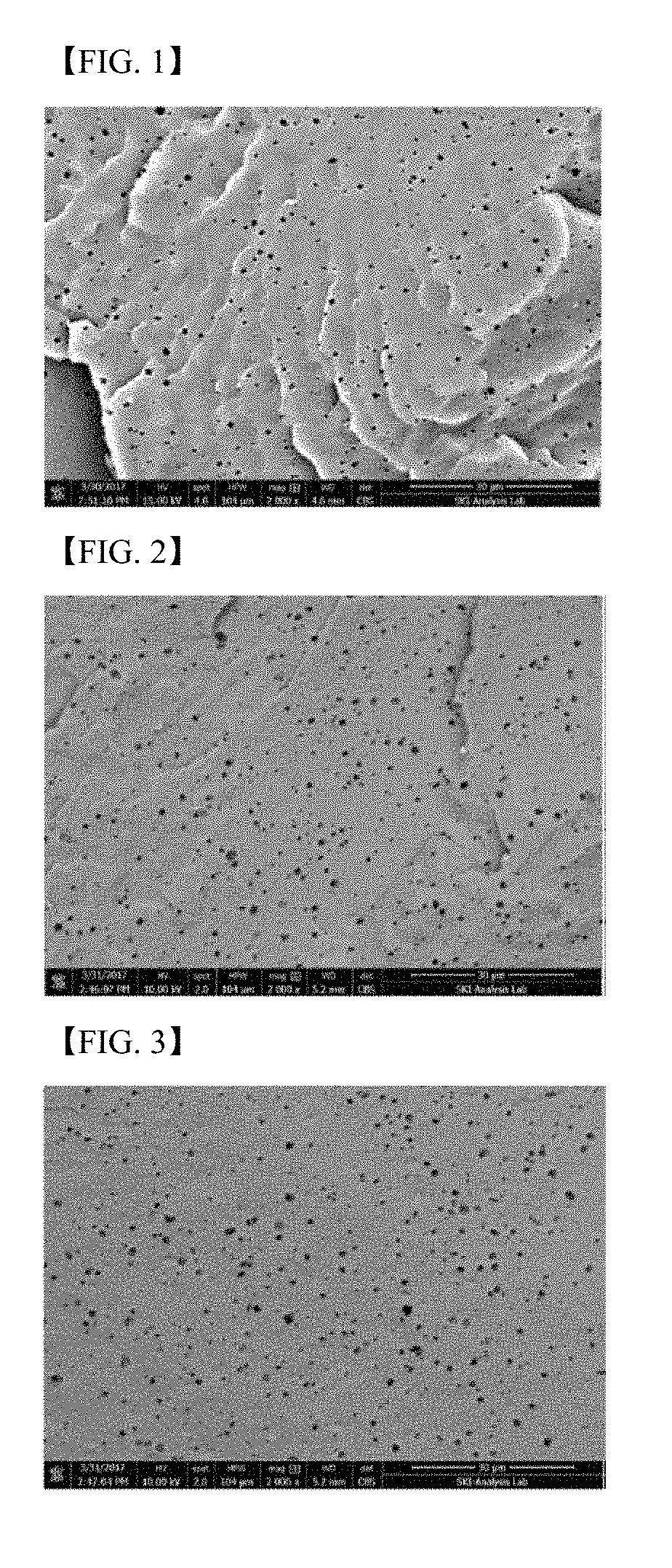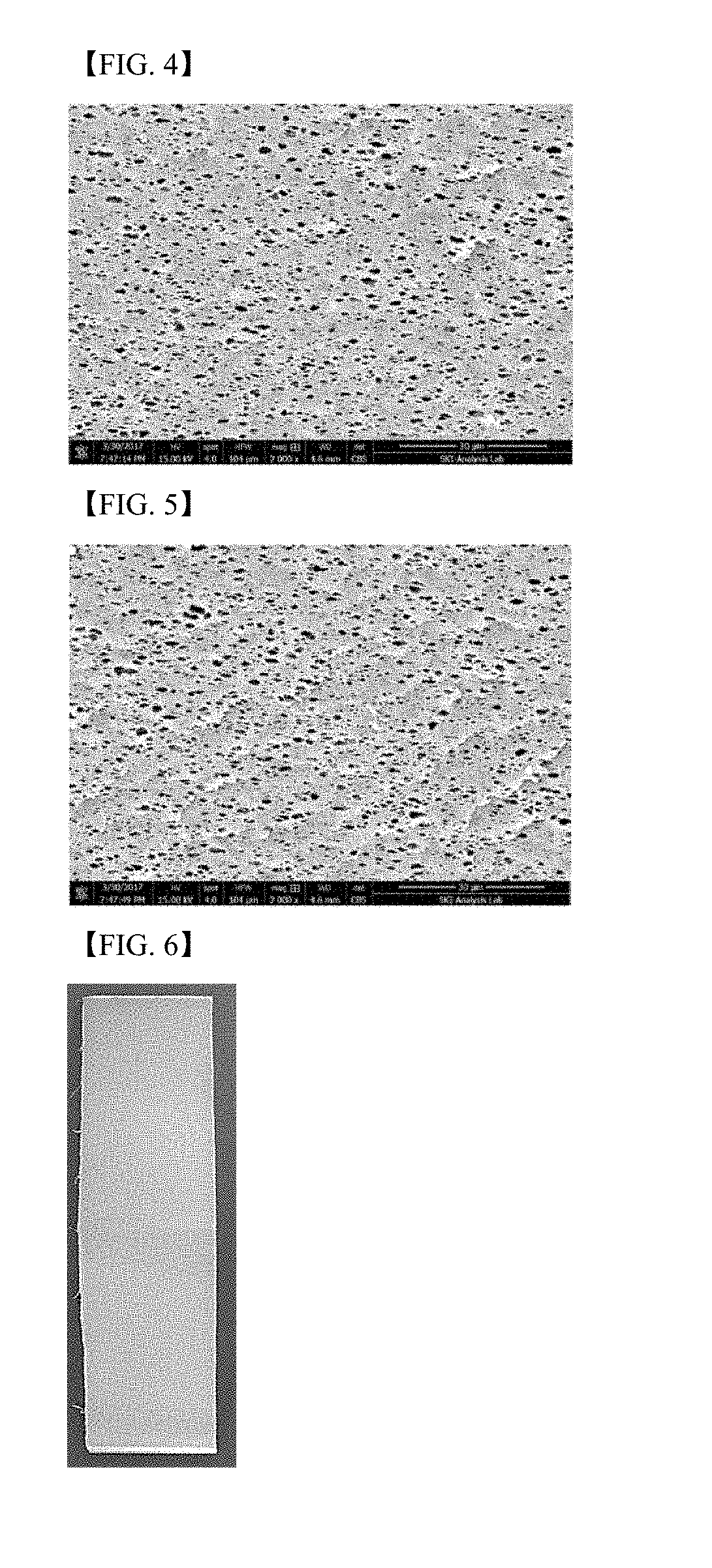Polymer composition based on polypropylene/propylene copolymer having semi-homogeneous phase
a polypropylene copolymer and polypropylene copolymer technology, applied in the direction of insulated conductors, cables, conductors, etc., can solve the problems of inability to reform (remold) xlpe, environmental problems, and large production facility site and power costs, and achieve excellent long-term heat resistance, excellent flexibility and bendability, and reduce the effect of whitening phenomenon
- Summary
- Abstract
- Description
- Claims
- Application Information
AI Technical Summary
Benefits of technology
Problems solved by technology
Method used
Image
Examples
example 2
[0079]A polymer composition including 65 wt % of homo-polypropylene, 35 wt % of a copolymer having a propylene / ethylene ratio (weight ratio) of 89 / 11, 10,000 ppm of a primary antioxidant and 10,000 ppm of a secondary antioxidant was prepared under the same extrusion conditions as in Example 1.
[0080]SEM analysis was conducted in the same manner as in Example 1 (see FIG. 2) and a cable was produced and analyzed under the same conditions as in Example 1.
example 3
[0081]A polymer composition including 65 wt % of homo-polypropylene, 35 wt % of a copolymer having a propylene / ethylene ratio (weight ratio) of 85 / 15, 10,000 ppm of a primary antioxidant and 10,000 ppm of a secondary antioxidant was prepared in the same extrusion conditions as in Example 1.
[0082]SEM analysis was conducted in the same manner as in Example 1 (see FIG. 3) and a cable was produced and analyzed under the same conditions as in Example 1.
example 4
[0083]A polymer composition including 25 wt % of homo-polypropylene, 75 wt % of a copolymer having a propylene / ethylene ratio (weight ratio) of 89 / 11, 0.03 parts by weight of vinyltrimethoxysilane as a compatibilizer, 0.0015 parts by weight of dicumyl peroxide as an initiator, 100 parts by weight of magnesium hydroxide and 50 parts by weight of hydromagnesite as an inorganic flame retardant agent and 4 parts by weight of a siloxane polymer as a processing aid, based on 100 parts by weight of homo-polypropylene, was mixed in a 75 mm twin-screw extruder under the following temperature conditions (cylinder: 170 to 195° C., die: 190° C.) to produce a pellet.
[0084]An injection sample was produced from the pellet thus produced at an injection temperature of 220° C., and tensile strength and elongation thereof were thus measured.
[0085]In addition, certified flame retardancy test was conducted for flame retardancy analysis.
PUM
| Property | Measurement | Unit |
|---|---|---|
| mean particle diameter | aaaaa | aaaaa |
| pressure | aaaaa | aaaaa |
| temperature | aaaaa | aaaaa |
Abstract
Description
Claims
Application Information
 Login to View More
Login to View More - R&D
- Intellectual Property
- Life Sciences
- Materials
- Tech Scout
- Unparalleled Data Quality
- Higher Quality Content
- 60% Fewer Hallucinations
Browse by: Latest US Patents, China's latest patents, Technical Efficacy Thesaurus, Application Domain, Technology Topic, Popular Technical Reports.
© 2025 PatSnap. All rights reserved.Legal|Privacy policy|Modern Slavery Act Transparency Statement|Sitemap|About US| Contact US: help@patsnap.com



